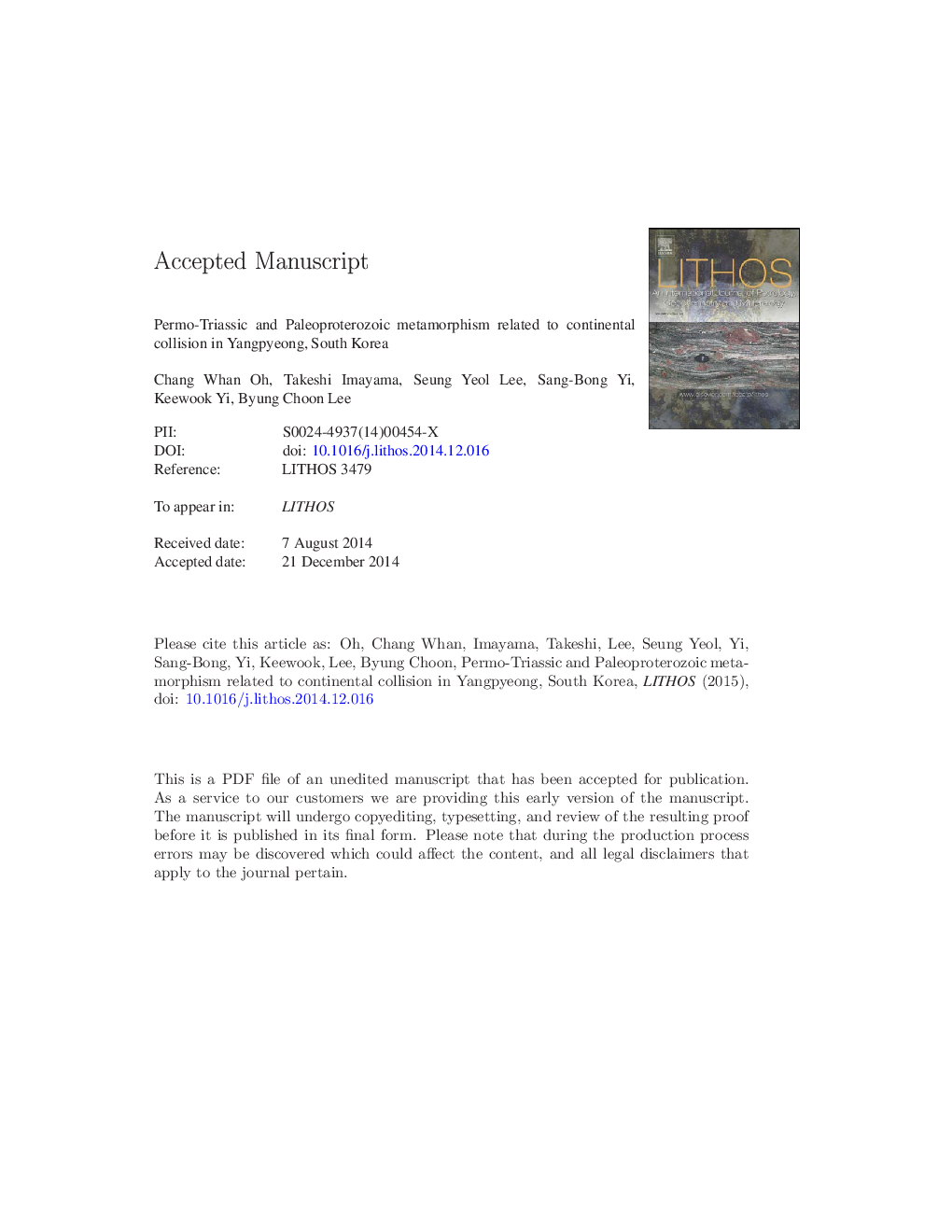| Article ID | Journal | Published Year | Pages | File Type |
|---|---|---|---|---|
| 6440777 | Lithos | 2015 | 68 Pages |
Abstract
Gneisses and migmatites exposed in the Yangpyeong area in the northern Gyeonggi Massif provide insight into the Paleoproterozoic and Triassic metamorphic events in South Korea. Garnet-biotite gneiss and sillimanite-garnet-biotite gneiss in the western part of the area reveal Paleoproterozoic metamorphism (1888-1871 Ma) at P-T conditions of 760-820 °C and 8-10 kbar and 710-750 °C and 5-7 kbar, respectively. These rocks were overprinted by low-P/T type metamorphism (590-650 °C, 3-4 kbar) during the Triassic (ca. 237 Ma). In contrast, a cordierite-rich migmatite near the post-collisional Triassic igneous complex in the eastern part of the area was strongly metamorphosed during the Triassic (ca. 235 Ma) at 750-790 °C and 7-8 kbar. The similar Triassic ages in the western and eastern areas suggest that low-P/T type metamorphism occurred as a second stage of regional metamorphism, which is characterized by the production of cordierite with an irregularly shaped garnet. The metamorphic grade of the Triassic metamorphism decreases spatially towards the west from granulite facies to amphibolite facies metamorphic conditions, and the Paleoproterozoic metamorphism is well preserved in the western part with low grade Triassic metamorphism. The new discovery of the Triassic metamorphic event in the Yangpyeong area, in addition to the previously reported Triassic post-collision igneous event, supports the idea that the continental collision belt between the North and South China blocks extends from the Hongseong area into the Odesan area through the Yangpyeong area in South Korea.
Keywords
Related Topics
Physical Sciences and Engineering
Earth and Planetary Sciences
Geochemistry and Petrology
Authors
Chang Whan Oh, Takeshi Imayama, Seung Yeol Lee, Sang-Bong Yi, Keewook Yi, Byung Choon Lee,
